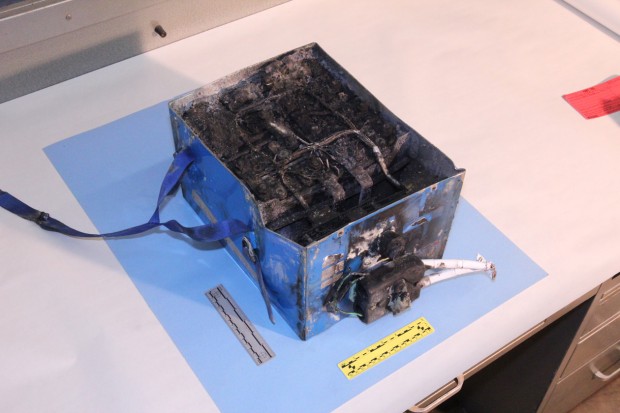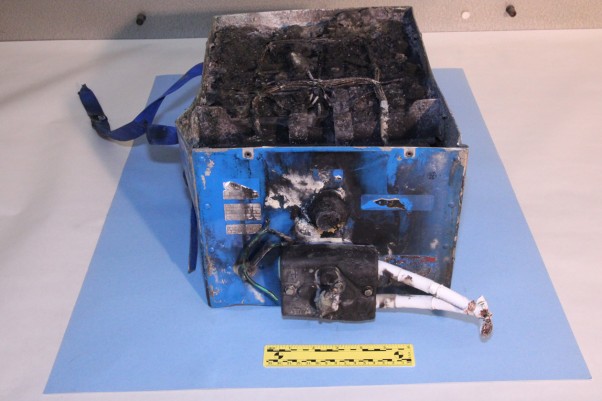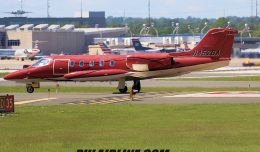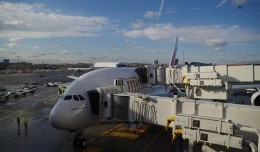The National Transportation Safety Board is making progress in its investigation of last week’s Boeing 787 Dreamliner fire in Boston and has some photos to prove it (see above and below).
An NTSB statement released on Monday did not offer any answers as to what caused the fire, but did explain in detail what the agency is doing to find out. Those steps include:
- Digital radiographs and computed tomography scans of the incident battery and a non-damaged battery of the same type
- Physical disassembly of the burnt battery
- Examination of burned wire bundles and the APU battery charger
- Downloading of data from maintenance and APU controller memory modules
- Documenting the entire aft electronics bay including the APU battery and the nearby affected structure where components and wire bundles were located
- Analysis of flight data recorder and cockpit voice recorder units
- Documentation of what firefighting efforts were used to extinguish the fire through interviews with first responders
Details of those firefighting efforts were explained:
Fire and rescue personnel were able to contain the fire using a clean agent (Halotron), however, they reported experiencing difficulty accessing the battery for removal during extinguishing efforts. All fire and rescue personnel responding to the incident had previously received aircraft familiarization training on the Boeing 787.
The agency also listed the all star team of industry experts working with them on the investigation. Represented are:
- Japan Transport Safety Board
- French Bureau d’Enquêtes et d’Analyses pour la sécurité de l’aviation civile
- Federal Aviation Administration (which is running a separate, broader investigation of the entire 787 program)
- The Boeing Company (the aircraft manufacturer)
- US Naval Surface Warfare Center’s Carderock Division (According to the Navy, Carderock’s “expertise spans more than 40 disciplines, from electrical and mechanical engineering to computer engineering and physics”)
- Japan Airlines (the aircraft operator)
- GS Yuasa (the battery manufacturer)
- Thales Avionics Electrical Systems (manufacturer of the APU battery/charger system)
The NTSB statement also mentioned that they released the plane back to Japan Airlines on January 10.
It was not immediately clear how much repair work would be needed to get the plane airworthy again.

Another angle of are the burnt Boeing 787 battery that caught fire in Boston. (Photo by NTSB)







